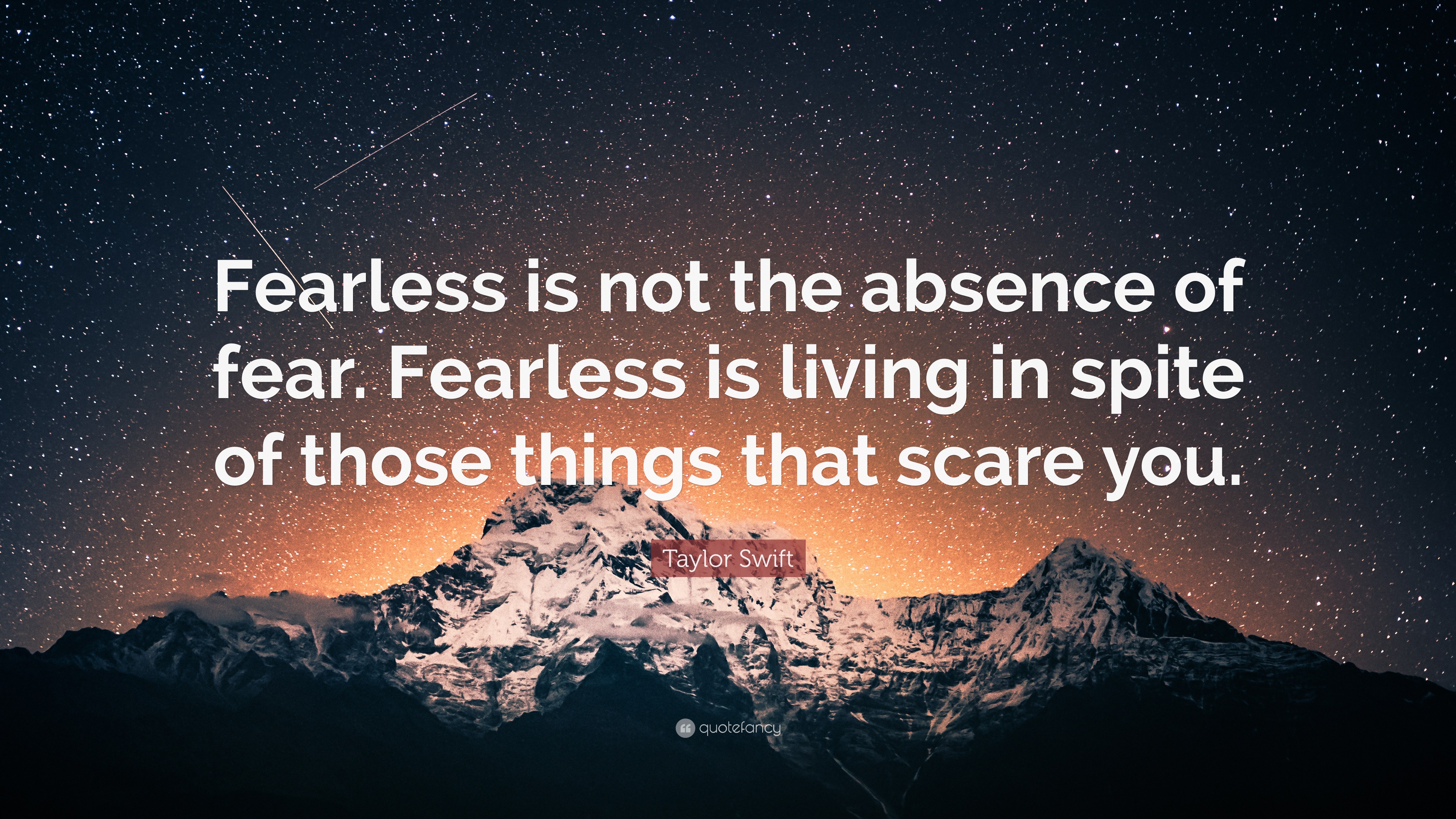Taylor Swift’s Music and Its Themes of Fear and Anxiety

Taylor Swift’s music is often lauded for its relatable and introspective lyrics. A recurring theme in her work is the exploration of fear and anxiety, emotions that resonate deeply with listeners. Throughout her career, Swift has woven these themes into her songwriting, creating a narrative that reflects both her personal experiences and the universal anxieties of the human condition.
Evolution of Fear and Anxiety in Taylor Swift’s Music
Swift’s exploration of fear and anxiety has evolved significantly across her albums, reflecting her personal growth and changing perspectives.
Early albums like *Fearless* and *Speak Now* often featured themes of teenage angst and the fear of heartbreak. Songs like “Fearless” and “You’re Not Sorry” portray the anxieties of young love and the fear of being hurt. The lyrics in “Fearless” reflect a youthful naivety, yet they also hint at a deeper understanding of the vulnerability that comes with love.
“I’m fearless, I’m fearless, I’m fearless, I’m fearless
I’m fearless, I’m fearless, I’m fearless, I’m fearless
I’m fearless, I’m fearless, I’m fearless, I’m fearless”
In her later albums, Swift’s songwriting delves into more mature and complex themes of anxiety and self-doubt. *Red* explores the tumultuous emotions of a failing relationship, with songs like “All Too Well” and “State of Grace” capturing the overwhelming fear of losing someone you love.
“I knew it from the first old fashioned
When we were both young
And I was fearless”
*1989* marks a shift towards a more introspective approach, with songs like “Blank Space” and “Out of the Woods” reflecting the anxieties of fame and the fear of being misunderstood. In “Blank Space,” Swift uses the metaphor of a blank space to represent the way the media and public perceive her, highlighting the fear of being defined by others.
“Got a long list of ex-lovers
They’ll tell you I’m insane
But I’ve got a blank space, baby
And I’ll write your name”
Swift’s most recent albums, *Reputation* and *Lover*, continue to explore themes of anxiety and fear, but with a more self-assured and empowered perspective. Songs like “Delicate” and “Cruel Summer” explore the fear of vulnerability and the anxieties of navigating romantic relationships. The vulnerability and honesty of these songs resonate deeply with listeners, who see themselves reflected in Swift’s lyrics.
“I don’t wanna ruin all the fun
We can have tonight
I know that I’m a little reckless
But I’m not afraid to lose you
Tonight, tonight”
Taylor Swift’s Music as a Platform for Discussing Fear and Anxiety
Taylor Swift’s music has provided a platform for discussing universal human experiences like fear and anxiety. By sharing her own vulnerabilities and struggles, Swift has created a space for her listeners to feel seen and understood. Her music has become a soundtrack for navigating these emotions, offering comfort and validation to those who feel alone in their anxieties.
Swift’s songs often provide a relatable narrative that allows listeners to connect with her experiences on a personal level. Her willingness to be vulnerable and honest in her songwriting has created a sense of intimacy with her audience, allowing them to feel understood and supported.
Swift’s music has also sparked important conversations about mental health and the importance of seeking help. By sharing her own struggles with anxiety and depression, Swift has helped to destigmatize these conditions and encourage others to seek support. Her music has become a source of strength and resilience for many listeners, reminding them that they are not alone in their struggles.
The “Taylor Swift Terror” Phenomenon

The term “Taylor Swift terror” refers to the intense and often overwhelming reactions of Taylor Swift’s fans, known as Swifties, to her music, career milestones, and personal life. It’s a testament to the passionate and dedicated fanbase that she has cultivated over the years.
The Origin and Meaning of “Taylor Swift Terror”
The phrase “Taylor Swift terror” originated within the online fan community, particularly on social media platforms like Twitter and Tumblr. It initially described the frenzy and excitement surrounding Swift’s album releases, tour announcements, and other significant events. However, it has evolved to encompass a broader range of fan reactions, including intense emotional responses to her music, passionate defense of her career choices, and a strong sense of community among Swifties.
Reasons Behind the Intense Fan Reactions
Several factors contribute to the intense fan reactions associated with Taylor Swift:
- Relatable Themes and Lyrics: Swift’s music often explores themes of love, heartbreak, loss, and personal growth, making her lyrics resonate deeply with her listeners. Her ability to capture universal emotions in her songwriting has fostered a strong connection between her and her fans.
- Personal Connection: Swift has been open about her personal life in her music, creating a sense of intimacy and personal connection with her fans. This transparency has allowed Swifties to feel like they know her on a deeper level, leading to a stronger emotional investment in her career.
- Strong Online Community: The online community of Swifties has played a significant role in amplifying fan reactions. Social media platforms have provided a space for fans to connect, share their love for Swift’s music, and support her career.
- Strategic Marketing and Fan Engagement: Swift’s team has strategically engaged with fans through social media, fan events, and exclusive content, further fueling their enthusiasm and loyalty.
The Cultural Impact of the “Taylor Swift Terror” Phenomenon
The “Taylor Swift terror” phenomenon has had a significant cultural impact, influencing both the music industry and fandom culture:
- Influence on Music and Fandom: The passionate and dedicated fanbase that Swift has cultivated has become a model for other artists and their fan communities. The intense fan reactions associated with Swift’s career have highlighted the power of fandom in shaping the music industry.
- Social Media and Fan Culture: The “Taylor Swift terror” phenomenon has contributed to the evolution of social media and fan culture. Swifties have been at the forefront of using social media platforms to connect with other fans, share their love for Swift’s music, and support her career. Their online activism has demonstrated the influence of fandom in the digital age.
- Impact on Marketing and Branding: Swift’s success in engaging with her fans has influenced how artists and brands approach marketing and branding. Her strategic use of social media and fan events has set a precedent for other artists seeking to build strong relationships with their audiences.
The Role of Media and Public Perception in Shaping the “Taylor Swift Terror” Narrative

The “Taylor Swift terror” narrative, while hyperbolic, highlights the significant role media plays in shaping public perception. This phenomenon demonstrates how media coverage, fueled by sensationalism and often fueled by a desire for clicks and views, can distort reality and contribute to the amplification of negative stereotypes.
Media Coverage and the “Taylor Swift Terror” Narrative
Media coverage has contributed to the “Taylor Swift terror” narrative by framing Taylor Swift and her fans in a negative light. This portrayal often relies on exaggeration and sensationalism, creating an atmosphere of fear and anxiety around the fandom.
- Sensationalist Headlines: Headlines like “Taylor Swift Fans Are Out of Control!” or “The Taylor Swift Terror: A Growing Threat” sensationalize the fandom, creating a sense of danger and chaos. These headlines, while attention-grabbing, often misrepresent the reality of the situation, focusing on isolated incidents while ignoring the vast majority of fans who behave respectfully.
- Selective Reporting: Media outlets often focus on negative incidents involving Taylor Swift fans, neglecting to report on the positive aspects of the fandom. This creates a skewed perception of the fandom as a whole, perpetuating the narrative of fanatical behavior and potentially inciting fear in the general public.
- Misrepresentation of Fans: The media often portrays Taylor Swift fans as obsessive, irrational, and potentially dangerous. This portrayal ignores the diverse range of fans, many of whom are simply passionate about her music and her message. This misrepresentation contributes to the “Taylor Swift terror” narrative by creating a negative stereotype that can be harmful to fans and their reputation.
Potential Biases and Misrepresentations in the Portrayal of Taylor Swift and Her Fans
The media’s portrayal of Taylor Swift and her fans is often biased and misrepresented. This bias can be attributed to several factors, including:
- Gender Bias: Taylor Swift is a female artist, and her fandom is predominantly female. This can lead to gender-based biases in media coverage, with female fans often being stereotyped as overly emotional, irrational, and easily manipulated. This perpetuates harmful stereotypes about women and their ability to engage with pop culture.
- Age Bias: Taylor Swift’s fans are predominantly young adults and teenagers. This can lead to age-based biases in media coverage, with young fans often being dismissed as immature, naive, and lacking critical thinking skills. This perpetuates harmful stereotypes about youth and their ability to engage with pop culture.
- The “Celebrity Culture” Factor: The media often sensationalizes celebrity culture, focusing on negative aspects like fanatical behavior and the potential for violence. This can lead to a distorted perception of celebrity fandoms, creating an atmosphere of fear and anxiety around any celebrity with a large and passionate fanbase.
Ethical Considerations Surrounding the Media’s Role in Shaping Public Perception
The media’s role in shaping public perception is a complex and ethically charged issue. It is essential for media outlets to:
- Report Accurately and Fairly: Media outlets should strive to report on events accurately and fairly, avoiding sensationalism and bias. This includes presenting a balanced perspective on issues, considering all sides of the story, and avoiding the use of harmful stereotypes.
- Be Mindful of the Impact of Their Reporting: Media outlets should be mindful of the impact of their reporting on individuals and communities. They should consider the potential for their reporting to create fear, anxiety, or prejudice, and they should take steps to mitigate these negative effects.
- Promote Critical Thinking: Media outlets should encourage critical thinking among their audience, helping them to discern fact from fiction and to evaluate information critically. This includes providing context, background information, and multiple perspectives on issues.
The “Taylor Swift terror” is a phenomenon that has captivated the internet, much like the sleek design of the Jan Ekselius Etcetera lounge chair. Both capture a sense of timeless elegance and appeal to a wide audience. Just as the chair offers comfort and sophistication, the “Taylor Swift terror” embodies a cultural shift in music and fandom, leaving fans in awe and wonder.
The Taylor Swift “terror” is a phenomenon that transcends music, reflecting a kind of cultural obsession. It’s a testament to her artistry and connection with fans, a connection so strong that it becomes almost a cult-like following. This passionate fanbase is reminiscent of the timeless appeal of the hans wegner shell lounge chair , a piece of furniture that has endured for generations due to its elegance and comfort.
Just as the chair offers a space for relaxation and contemplation, Taylor Swift’s music provides a sanctuary for her fans, offering solace and escapism.